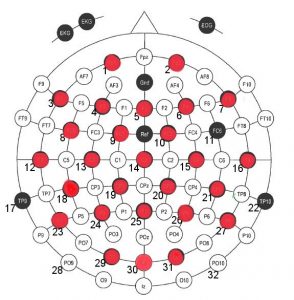Goal
We began 2 months ago, to develop a ML model to detect distress using EEG signals.
First Month:
we were confused where to begin, the cloud servers were hard to navigate with for some of us. EEG data collected from subjects in pain, was just impossible to find, leading us to look for what we can get. We came across grasp and lift and SEED after 2 weeks of looking.
The first route of action was to understand the data, are there any missing values, how was it collected, are there any special attributes or patterns that can be used for our purpose.
The EEG data is recorded at 1000Hz (0.001s) but downsampled to 200 Hz which is 0.002s, I used time series concepts studied at UBC. Transformed the data into frequency domain using a spectral density function but soon realized due to alterations in such a small time frame, the signals would seem like white noised the autocorrelations would not be accurate due to the downsampling.
After deciding the traditional approach of building a simple LR model and then improving the base model using ML models would not be feasible due to lack of domain specific knowledge. I decided to focus my efforts more on combining both datasets together as the ideal model would only have one raw-eeg input.
The SEED data is sparse, and the authors did a fantastic job in providing the datasets with working tutorials that were building blocks for me to extract data. The MNE package is another great tool that allowed me to pick channels that are in both motion and emotion datasets. This ensured similar dimensions of the EEG data.

Selected 28 EEG nodes (marked in red).
Continue reading “FIRST E.A.D: Completed Model and Final Thoughts”
